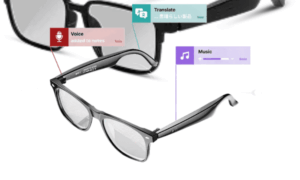The roof is one of the most vital parts of your home, protecting your property from weather elements and ensuring the structural integrity of the building. Over time, however, even the best roofs will require maintenance and repair. From minor leaks to severe storm damage, understanding common roofing issues and how to address them is crucial for maintaining the longevity of your roof.
In this article, we will explore some of the most frequent roof repair problems and provide insights on how to tackle them effectively. By being proactive and seeking professional help when needed, homeowners can avoid costly repairs and ensure their roof remains in good condition.
1. Leaks and Water Damage
Roof leaks are among the most common problems homeowners face. Whether it’s a minor drip or a more significant leak, water intrusion can lead to extensive damage if not addressed promptly. Leaks often occur due to damaged shingles, improper flashing, or cracked vents and skylights.
Causes of Roof Leaks:
- Damaged Shingles: Shingles protect your roof from rain and moisture, but they can be damaged over time by wind, hail, or prolonged exposure to the sun. Cracked or missing shingles allow water to penetrate the roof deck.
- Improper Flashing: Flashing seals the joints around chimneys, skylights, and vents. If the flashing is improperly installed or deteriorates, it can create gaps where water can enter.
- Clogged Gutters: When gutters are clogged with debris, water can back up onto the roof, causing leaks and water damage.
Solution: The first step in addressing roof leaks is identifying the source. A roofing professional can inspect the roof, locate the leak, and recommend repairs, such as replacing damaged shingles or resealing flashing. Timely intervention can prevent further water damage, including mold growth and structural weakening.
Homeowners in the Twin Cities can rely on Best Choice Roofing Twin Cities to handle roof repairs promptly, ensuring that leaks are repaired effectively and preventing future issues.
2. Damaged or Missing Shingles
Shingles are your roof’s primary defense against weather elements. Over time, they can become cracked, curled, or completely detached due to extreme weather conditions such as windstorms, hail, or heavy snowfall. Damaged shingles expose the underlying roof structure to moisture, increasing the risk of leaks and rot.
Signs of Shingle Damage:
- Cracked or Curling Shingles: Aging and weather exposure can cause shingles to crack or curl at the edges, making them less effective at keeping out water.
- Missing Shingles: Strong winds or storms can blow shingles off your roof, leaving patches of the roof exposed.
- Granule Loss: Asphalt shingles lose granules over time, which weakens their ability to protect your roof from the sun’s UV rays and reduces their lifespan.
Solution: Shingle damage is relatively easy to spot during a visual inspection. If you notice damaged or missing shingles, contact a roofing professional to assess the extent of the damage. In many cases, replacing individual shingles is sufficient. However, if a large portion of your roof is affected, it may be time to consider a roof replacement.
3. Roof Ventilation Issues
Proper ventilation is essential for maintaining the health of your roof and preventing issues such as excessive moisture, mold growth, and higher energy costs. Without adequate ventilation, heat and moisture can build up in the attic, causing damage to the roof deck, insulation, and shingles.
Problems Caused by Poor Ventilation:
- Warped Roof Deck: When moisture becomes trapped in the attic, it can cause the wooden roof deck to warp or rot.
- Shingle Damage: Excess heat can cause shingles to become brittle and deteriorate faster than expected.
- Mold Growth: Poor ventilation creates a humid environment, which is ideal for mold and mildew to grow. This not only damages your roof but also poses health risks.
Solution: Ensuring proper roof ventilation involves installing vents in the attic that allow hot air to escape and cool air to enter. Ridge vents, soffit vents, and attic fans can help regulate the temperature and moisture levels in your attic. A roofing company can assess your home’s ventilation system and recommend solutions to improve airflow and protect your roof.
4. Flashing Failures
Flashing is used to seal the joints and edges around roof features such as chimneys, skylights, and vents. Over time, flashing can become loose, corroded, or cracked, leading to water penetration and leaks.
Common Flashing Problems:
- Corrosion: Metal flashing, particularly around chimneys and vents, can corrode over time due to constant exposure to moisture.
- Loose or Cracked Flashing: If flashing is not properly secured or has developed cracks, water can seep into the roof, causing leaks.
- Improper Installation: Inadequate flashing installation during roof construction or repairs is a common cause of leaks around chimneys and skylights.
Solution: To fix flashing issues, damaged sections must be replaced or resealed to restore their waterproofing abilities. A professional roofer can assess the condition of your flashing and recommend repairs to prevent further water damage.
5. Gutter Issues
Gutters play a crucial role in directing water away from your roof and home’s foundation. When gutters are clogged with leaves, dirt, and debris, water can overflow and damage the roof, fascia, and soffits. Additionally, poor gutter drainage can lead to water pooling on the roof, increasing the likelihood of leaks and rot.
Signs of Gutter Problems:
- Clogged Gutters: Water spilling over the edges of the gutters during rain is a clear sign of clogs.
- Sagging Gutters: If gutters become too heavy with debris, they can sag or detach from the roof, compromising their effectiveness.
- Water Stains: Stains on the fascia or siding can indicate water damage from clogged or overflowing gutters.
Solution: Cleaning your gutters regularly, especially during the fall and spring, helps prevent debris buildup and ensures proper drainage. If your gutters are damaged or sagging, it may be necessary to replace sections or install a new gutter system. A well-maintained gutter system helps protect your roof and extends its lifespan.
6. Ice Dams in Winter
In colder climates, ice dams are a significant concern during the winter months. Ice dams form when heat escapes from the attic, melting snow on the roof. As the water runs down the roof and reaches the colder edges, it refreezes, forming a barrier of ice. This can prevent water from draining properly, causing it to back up under the shingles and into your home.
Dangers of Ice Dams:
- Water Damage: Ice dams can cause water to seep under shingles, leading to leaks and water damage in the attic and walls.
- Shingle Damage: The weight of the ice can damage shingles and the roof deck, increasing the need for repairs.
- Gutter Damage: Ice dams can put additional strain on gutters, causing them to sag or break.
Solution: Preventing ice dams involves improving roof insulation and ventilation to reduce heat loss from the attic. You can also install heated cables along the roof edges to melt ice and allow water to drain safely. Removing snow from the roof after heavy snowfall can also help prevent ice dam formation.
7. Roof Age and Wear
No matter how well-maintained your roof is, all roofing materials will eventually wear out and require replacement. The age of your roof plays a significant role in determining when repairs are no longer effective and a replacement is necessary.
How Roof Age Affects Repairs:
- Frequent Repairs: If you find yourself making frequent repairs, it may be more cost-effective to replace the roof rather than continue patching it up.
- Signs of Aging: As roofs age, they begin to show signs of wear such as cracked or curled shingles, granule loss, and sagging.
Solution: If your roof is nearing the end of its expected lifespan—usually 20 to 30 years for shingle roofs—it’s time to consult with a roofing professional to determine whether a replacement is necessary. A new roof offers better protection and can save you money on repeated repairs.
Conclusion
Roof repair is an inevitable part of homeownership, but knowing the common issues and how to address them can help prevent more extensive damage and costly repairs. Whether it’s fixing leaks, replacing damaged shingles, or addressing ventilation problems, taking proactive steps ensures the longevity of your roof.
For homeowners in the Twin Cities, Best Choice Roofing Twin Cities offers expert roof repair services to help you tackle these common roofing issues and keep your home protected. Whether it’s a small repair or a more complex issue, timely intervention is key to preserving your roof and maintaining the overall health of your home.
For more tips on identifying and fixing common roof repair issues, visit this website for expert advice and solutions.



































